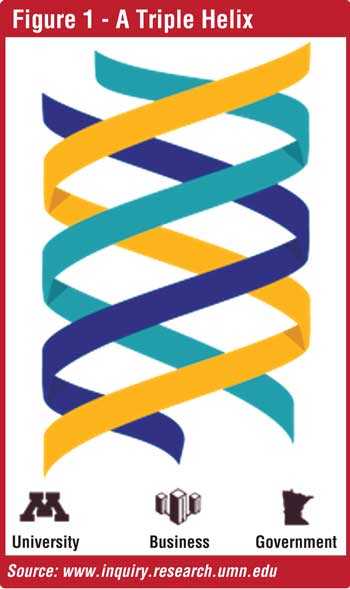Thursday Jan 15, 2026
Thursday Jan 15, 2026
Monday, 29 July 2019 00:00 - - {{hitsCtrl.values.hits}}
The latest addition to the chaos that we experience is the hazardous garbage containers imported from the UK. We are plagued with multiple environmental challenges. Whilst garbage disposals are still non-systematic, dengue mosquitoes continue to inflict misery to millions. Do we see eco-friendly initiatives or egos clashing while adamantly clinging onto one’s positions and opinions?
Blame game has taken another twist with the questioning or ascertaining of the backbones of the political leaders. Instead of playing trombones for petty political gains, it is time to revisit sustainability in the context of Sri Lanka with its associated implications. Let me call it a clarion call to shift from ego to eco with a holistic approach.

Overview
As recently reported in foreign media, Sri Lanka’s pushback on imported trash came as Indonesia and the Philippines returned shipments of foreign rubbish to their originating ports. Indonesia announced two weeks ago it was sending more than 210 tonnes of garbage back to Australia and Canada has agreed to accept 69 containers of rubbish it had shipped to the Philippines between 2013 and 2014. According to Sri Lanka Customs, the 130 containers were stuffed with used mattresses and plastic and clinical waste imported in violation of international laws governing the shipping of hazardous material.
This sad state of affairs confirms the need to have a strategic and holistic approach towards sustainability. My friend, Dr. Ravi Fernando of INSEAD fame has been clamouring on required policy changes with regard to strategic sustainability in Sri Lanka. In a similar line, I recall an impactful study program I attended together with a group of Sri Lankan senior public administrators at the Maastricht School of Management in the Netherlands, organised by the Postgraduate Institute of Management (PIM). Among many valued exposures, the concept of strengthening sustainability through a triple-helix approach with eco-systems offered us much insights.
Let’s be clear about the key concepts. Ecosystems are so essential for the nature. The typical biology textbooks call it a community of living organisms that provide basis for survival and sustainability. Helix can be considered as an object having a three-dimensional shape like that of a wire wound uniformly in a single layer around a cylinder or cone, as in a corkscrew or spiral staircase. Mathematically, it is a curve in three-dimensional space. It has the property that the tangent line at any point makes a constant angle with a fixed line called the axis. In that sense, a triple helix (or helices) is a set of three helices with the same axis and located in an intertwined position. Scientists tell us the presence of such formations in our DNAs.
Triple Helix approach to sustainability
The name sustainability is derived from the Latin sustinere meaning to ‘maintain’, ‘support’, or ‘endure’. Since the 1980s sustainability has been used more in the sense of human sustainability on planet Earth and this has resulted in the most widely quoted definition of sustainability as a part of the concept sustainable development, that of the Brundtland Commission of the United Nations on March 20, 1987: “Sustainable development is development that meets the needs of the present without compromising the ability of future generations to meet their own needs.”
Corporate social responsibility (CSR) can be viewed as a form of corporate self-regulation integrated into a business model. It can be described as an organisation’s sense of responsibility towards the describe community and environment (both ecological and social) in which it operates. CSR policy functions as a self-regulatory mechanism whereby a business monitors and ensures its active compliance with the spirit of the law, ethical standards and international norms. In essence, sustainability and CSR speak of the same priorities, from the organisational point of view. 
The concept of triple helix applied to sustainability began in mid-nineties. It was initiated as an intertwined approach connecting university, government and industry. Triple Helix movement, launched by Prof. Henry Etzkowitz and Prof. Loet Leydesdorff, began in 1996 when a workshop was organised in Amsterdam to discuss the Triple Helix model. This first workshop brought together of 90 researchers and attracted participation from Latin America, Europe, North America, Australia and Asia. The workshop was subsequently referred to as the first international conference on the Triple Helix.
Figure 1 depicts the intertwined nature of triple helix involving university, government and industry.
This highlights a clear shift from a dominating industry-government dyad in the ‘Industrial Society’ to a growing triadic relationship between university-industry-government in the ‘Knowledge Society’. As the Triple Helix research group of Stanford University states, “The potential for innovation and economic development in a Knowledge Society lies in a more prominent role for the university and in the hybridisation of elements from university, industry and government to generate new institutional and social formats for the production, transfer and application of knowledge.”
This vision encompasses not only the creative destruction that appears as a natural innovation dynamic (Schumpeter, 1942), but also the creative renewal that arises within each of the three institutional spheres of university, industry and government, as well as at their intersections.
Through subsequent development, a significant body of Triple Helix research has grown over the last two decades that provides a general framework for exploring complex innovation dynamics and for informing national, regional and international innovation and development policy-making.
As the Stanford university sources advocate, the ‘Entrepreneurial University’ is a central concept to the Triple Helix. It takes a pro-active stance in putting knowledge to use and in creating new knowledge. It operates according to an interactive rather than a linear model of innovation. As firms raise their technological level, they engage in higher levels of training and knowledge sharing. Government acts as a public entrepreneur and venture capitalist, in addition to its traditional regulatory role in setting the rules of the game.
“As universities develop links, they can combine discrete pieces of intellectual property and jointly exploit them. Innovation has expanded from an internal process within and even among firms to an activity that involves institutions not traditionally thought of as having a direct role in innovation such as universities. The academic ‘third mission’ – involvement in socio-economic development, next to the traditional missions of teaching and research, is most salient in the Entrepreneurial University.”
Relevance to Sri Lanka
Can Sri Lankan universities also take necessary timely initiatives? I am humbly to lead the only state sector higher education entity that is self-financed for the past 20 years. The multiple eco-friendly initiatives taken in line with the ‘sustainability pillar’ of our ‘edifice of excellence’ are signs of what is possible in Sri Lanka in lighting a candle than cursing the darkness.
The triple helix approach in utilising the research strengths of universities with experiential insights of industry within a conducive policy framework of the government has paved way for sustainable results in several developing and developed countries around the world. Sri Lanka is no exception. In fact, we can appropriately adopt best practices. The dire need is to start from somewhere with supportive leadership. That requires a conversion from ‘ego to eco’.
I recall a series of seminars conducted in Sri Lanka by Dr. Wayne Visser, the Chair of Sustainable Business at the Gordon Institute of Business Science in South Africa, where similar sentiments were echoed. As he observed:
“A doctor judges his/her success by whether the patient is getting better (healthier) or worse (sicker). Similarly, we should judge the success of CSR by whether our communities and ecosystems are getting better or worse. And while at the micro level – in terms of specific CSR projects and practices – we can show many improvements, at the macro level almost every indicator of our social, environmental and ethical health is in decline.”
Dr. Ravi Fernando in a recent seminar highlighted the crucial need for professional and academic programs to integrate the corporate sustainability subject into the curriculum to ensure future business leaders understand the increasing importance of working towards safeguarding the planet. This is much in line with a triple helix approach. With convincing evidence, He noted that if sustainability is not embedded into the curriculum, thinking and mindset of future business leaders, then there lies a risk in creating future decision makers who will probably have a more negative impact on the planet instead of a positive one.
As he observed, having understood the increasing risks of fossil fuels, most countries were moving away from building power plants which are fossil fuels based, except Sri Lanka, which is planning on expanding more fossil fuel centric power plants. According to him, the country has planned 12 more coal power and LNG plants. “China is closing down coal power plants, and India is moving away from it, while Europe has already moved towards renewable energy sources, but in Sri Lanka, we are basically taking two guns and shooting ourselves,” he said.
Way forward
Is it a case of an absence of a robust policy framework? Or is it a case of the void of strong political will to implement decisions? Or is it yet another case of not having the right person in the right position to take right decisions? We need to move ahead with vision, passion and action as a nation. This is where the backbone comes to the forefront. Instead of playing trombones to show the presence of it, the truthful decisions at policy fronts without frustrating delays will provide evidence. Of course, actions speak louder than words.
It reminds me of what Josiah Charles Stamp stated. “It is easy to dodge our responsibilities, but we cannot dodge the consequences of dodging our responsibilities.”
(The writer can be reached through [email protected], [email protected] or www.ajanthadharmasiri.info.)